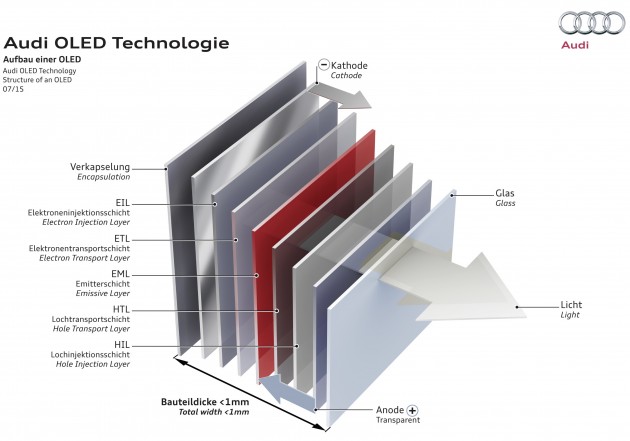The next big thing in automotive lighting technology is Matrix OLED (Organic light emitting diode), and Audi is right at the forefront of this ground-breaking advancement. The video above has a glimpse of it right at the end, and it's worth the wait.
These lights open up a plethora of possibilities with previously-unattainable levels of homogeneity, and amazing creative opportunities for design. Initial projects involve the implementation of OLED technology in taillights.

In each OLED unit, two electrodes – of which at least one must be transparent – incorporate numerous thin layers of organic semiconductor materials. A low DC voltage – between three and four volts – activates the layers, each of which is less than one thousandth of a millimeter thick, to light them. The colour is based on the molecular composition of the light source.
In contrast to conventional LEDs, which are made of semiconductor crystals; OLEDs are flat light sources, and do not cast any shadows and do not require any reflectors light guides or similar optical components. This makes OLED units highly efficient and lightweight.

Audi is working hard to improve the light density of these OLEDs to generate turn signals and brake lights. The company has already showcased multi-coloured OLEDs in the silhouette of the car and 'the swarm' with a three-dimensional OLED display.
More importantly, OLEDs can be divided into smaller segments that can be controlled at different brightness levels, colours and transparencies. Therefore, the lighting scenarios and extremely fast switchover times can potentially create magnificent effects.


No comments:
Post a Comment